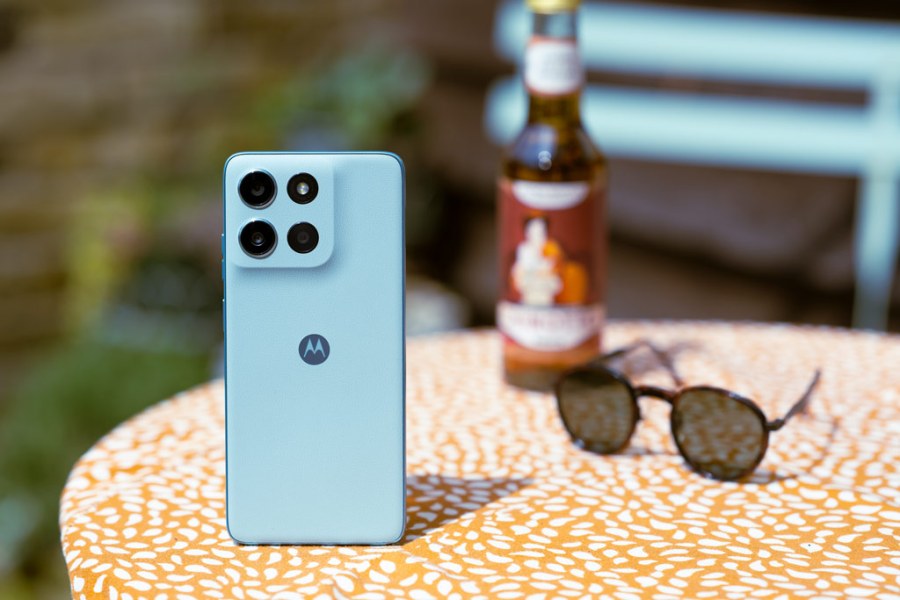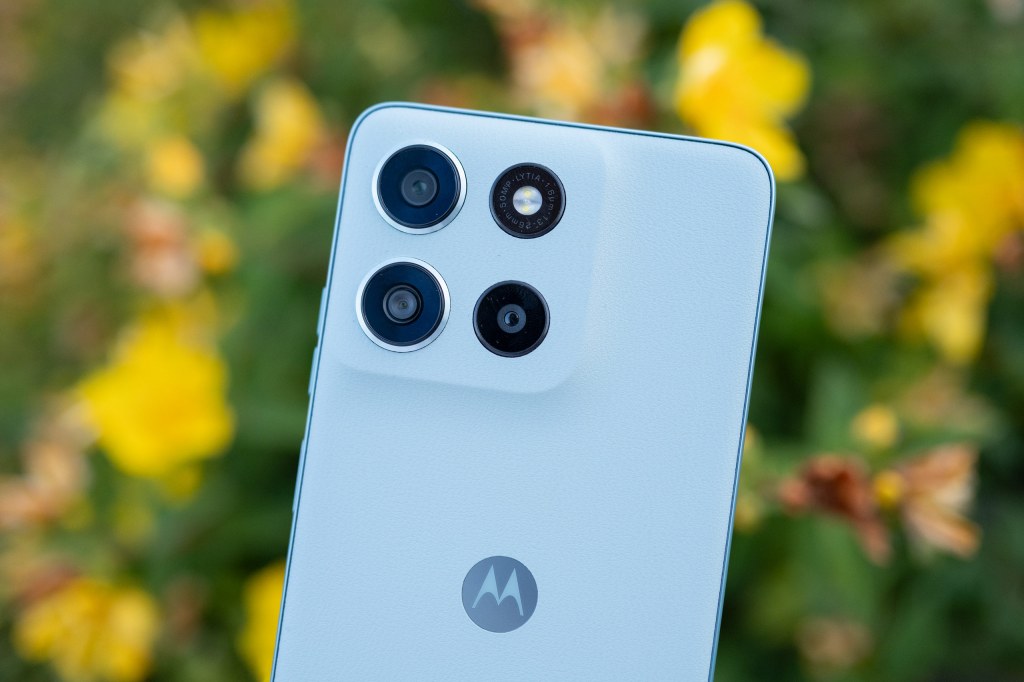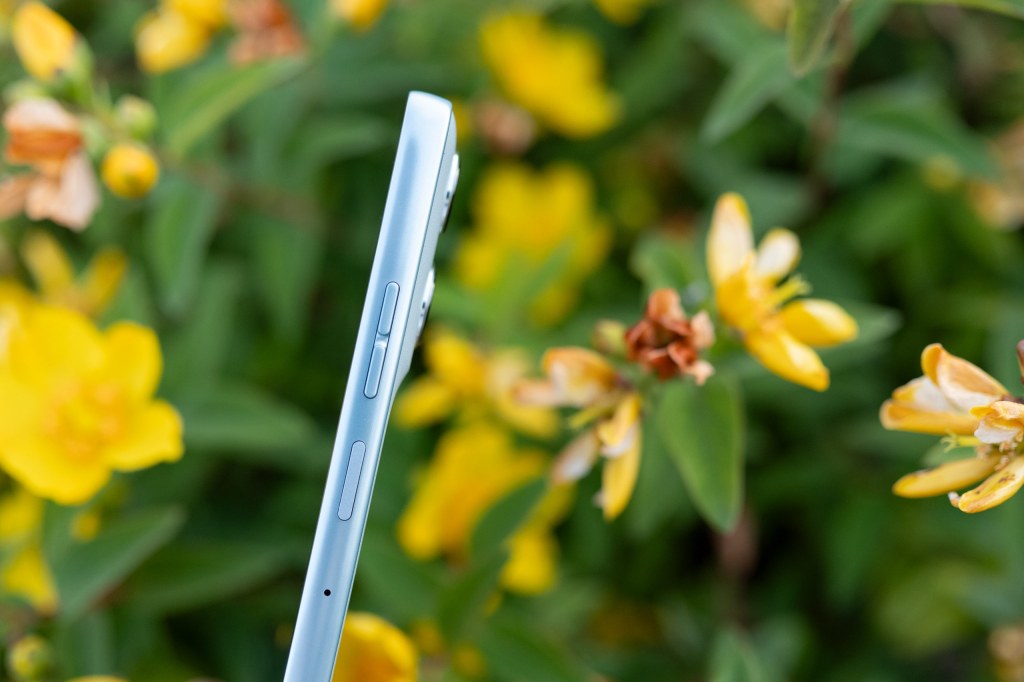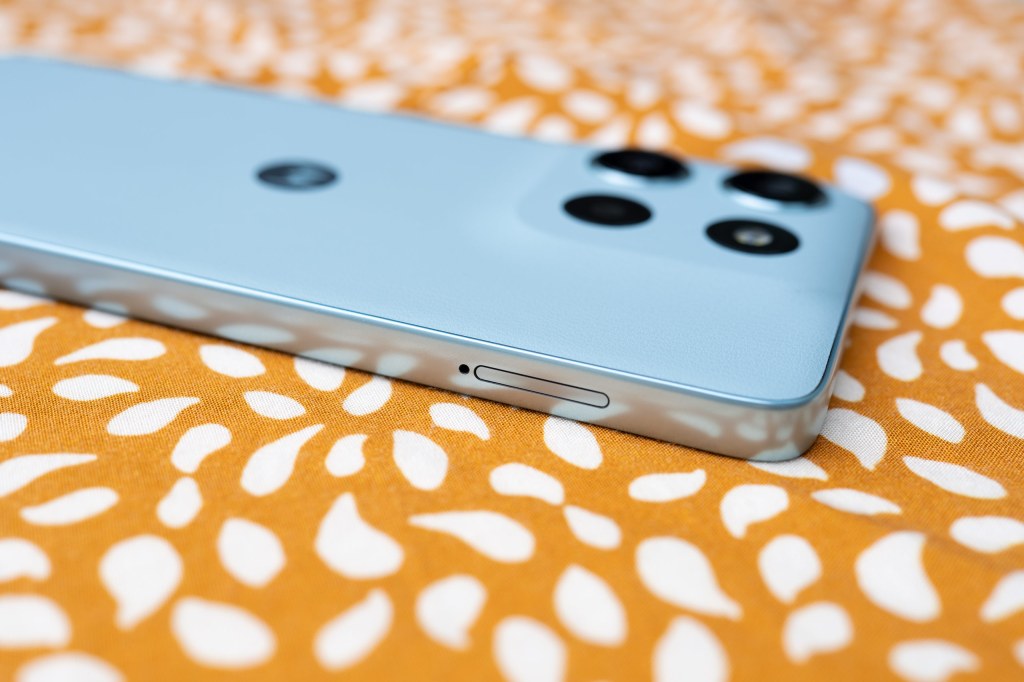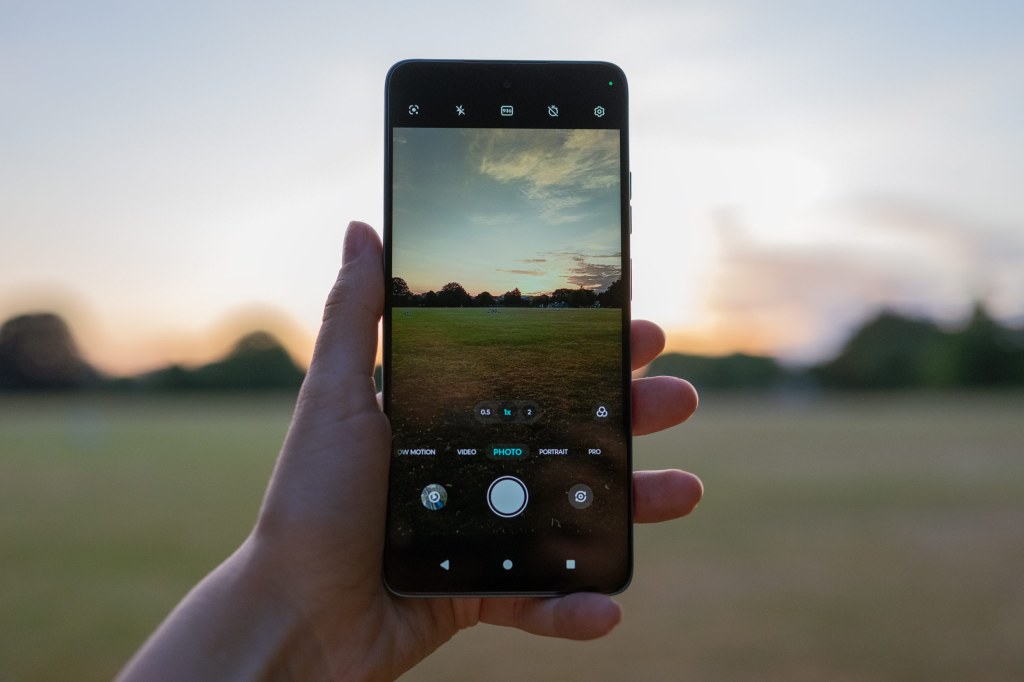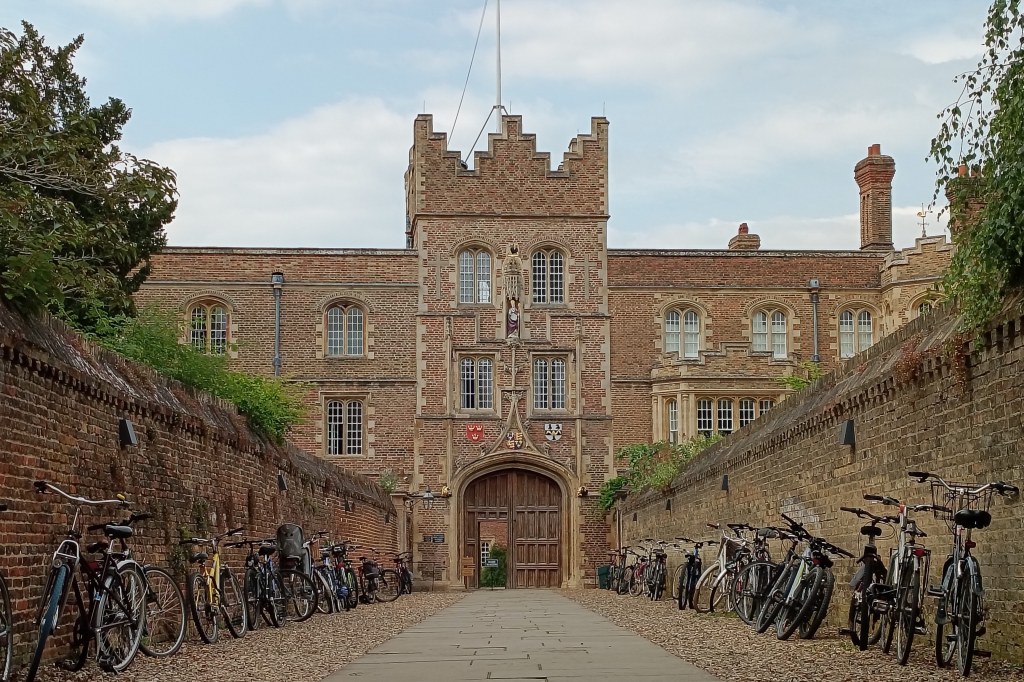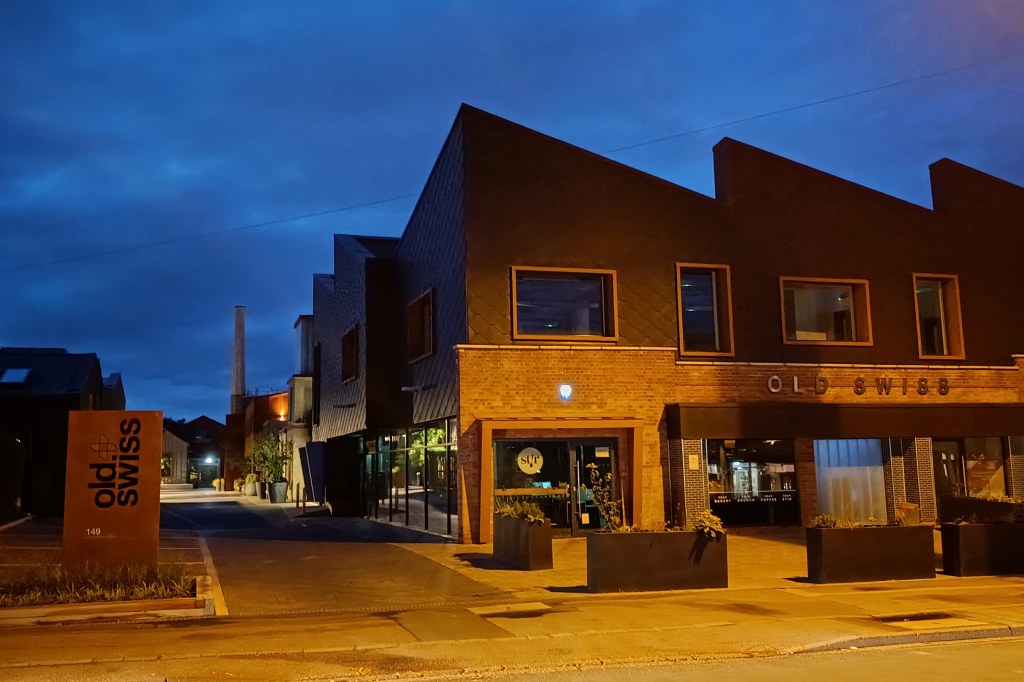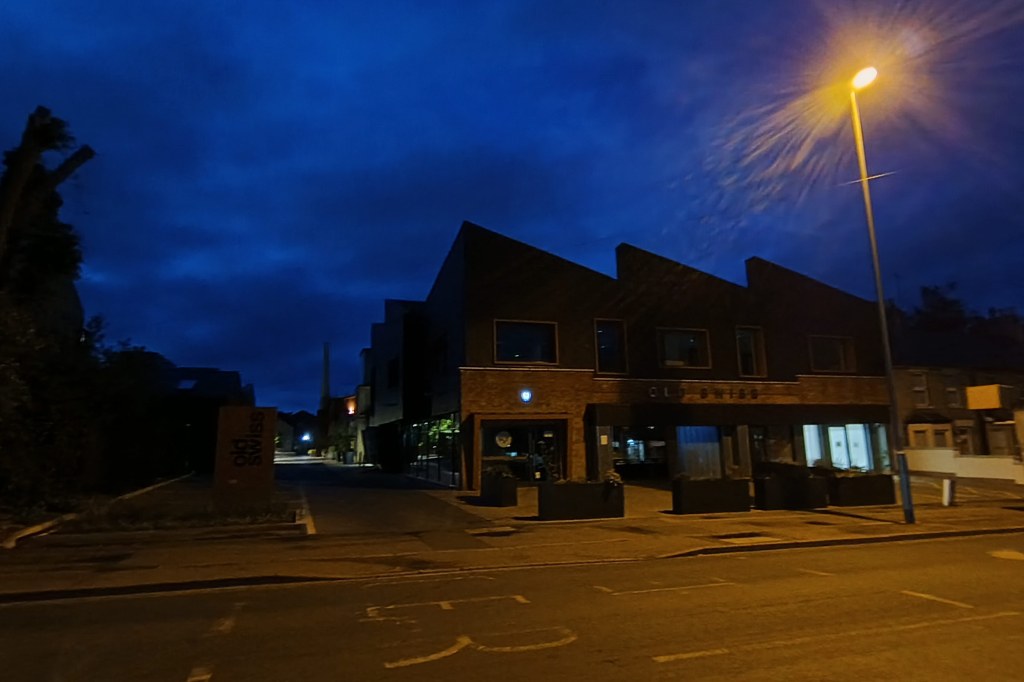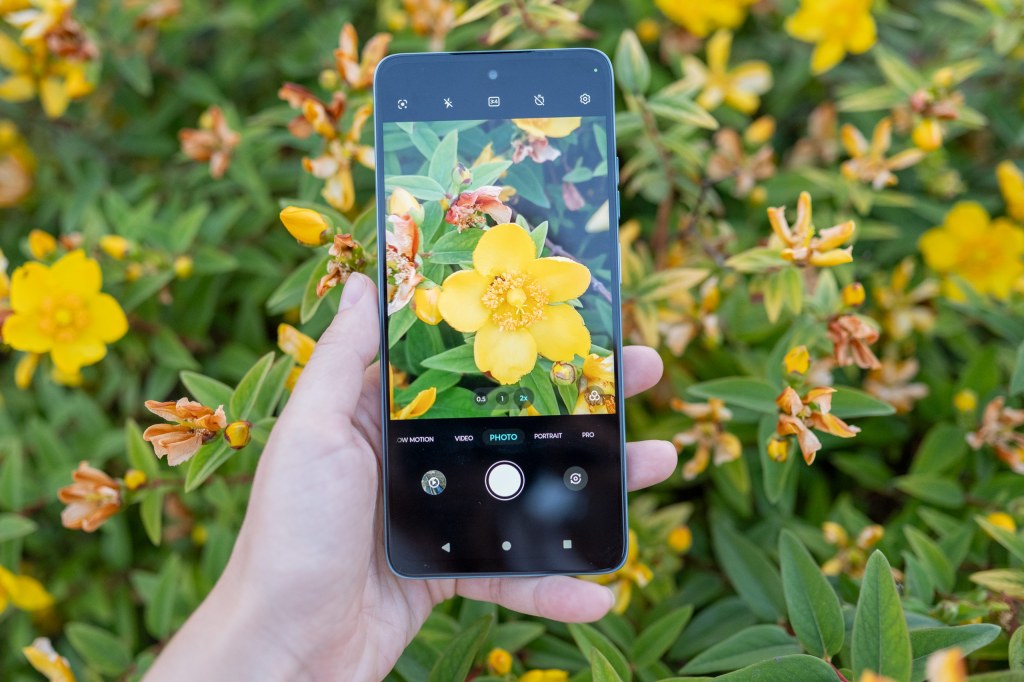Amateur Photographer verdict
With impressive battery life, extendable storage and an OK main camera backed by a 50MP Sony sensor, the Moto G56 is a good option for those who take lots of snaps and want a phone under £200- 50MP Sony sensor performs well
- Micro SDXC card slot up to 2TB
- Generous 5200mAh battery
- Super affordable
- 8MP Ultra-wide camera
- No 4K video
The Moto G56 is the latest addition to Motorola’s budget phones, announced alongside the Moto G86 and G86 Power. With the G-series, Motorola is committed to releasing affordable and functional phones that provide good battery life and a clean user experience, and the G56 is no exception. But how good is its camera set-up?
Motorola Moto G56 at a glance:
- 50MP main Sony LYTIA600 sensor, f/1.8, PDAF, 1x with 2x crop available
- 8MP ultra wide camera, f/2.2
- 32MP selfie camera, f/2.2
- FullHD 60p video
- 6.72inch, 120Hz LCD screen, Corning Gorilla Glass 7i
- 5200mAh battery, 30W charging
- Ram/Storage: 8GB RAM +256GB storage extendable to 2TB
- OS system: Android 15
- IP68 & IP69
- Size: 165.8 x 76.3 x 8.4mm
- Weight: 200g
- Price: £199
We review smartphones from the perspective of choosing a smartphone for its photography and camera performance, so we’ll be starting by looking at what the Moto G56 offers in terms of the cameras and what features are included for photography and video.
Moto G56 – Features
For £199, it is one of the cheapest phones the firm offers, only beaten by the Moto G15 at £139. The G56 features a new 50 MP Sony LYTIA600 sensor with bright f/1.8 aperture, PDAF and 0.8 μm pixel size, an incremental update over the G55. The main camera uses Quad Pixel Technology, which aids low-light performance and helps control noise, but seems to have lost OIS in the meantime. The second camera is a more moderate 8MP ultra-wide-angle one with an f/2.2 aperture. For selfies, it is equipped with a 32MP f/2.2 HDR camera, which has a 0.7μm pixel size.
The Moto G56 records FullHD 60p video using the main camera; there’s no 4K recording available. When using the ultra-wide camera, you are further limited to only 30p. It is one of the first devices that received the brand new MediaTek Dimensity 7060 processor and features a 5200 mAh battery, unusually big for this price and could see you through a whole day with constant use, but it supports slow, 30W wired charging only.
The Moto G56 comes with Android 15, with two further OS updates promised. As the latest Android 16 is already out, Motorola announced that it will be available for the series, with the official availability timeline to be confirmed. Given their notoriously bad track record rolling out updates, let’s hope customers won’t have to wait too long this time.
Unlike most budget smartphones, the G56 has an extendable memory from the base 256GB to a very generous 2TB, but keep in mind SDXC cards with that kind of capacity will set you back another £200.
Moto G56 – Handling and design
At first sight, you can easily double-take the moto G56 for a quad-camera phone, but in fact, it only has two cameras at the rear just like the G55 had. The one on the top right is a flash and the one below is an ambient light sensor.
I liked that, despite being a budget device, it came already equipped with a clear case. But I have to admit Motorola’s eco leather cover has such a nice feel in your hand that for the first time I thought, here’s a phone I wouldn’t want to snap a case on.
It also boasts the highest available dust and water resistance rating at IP68 & IP69, and a sturdy Corning Gorilla Glass 7i display. Altogether pretty impressive for a phone for £199. The only blip is that it features a plastic frame, which makes it more susceptible to scratches and damage, so that clear case might just need to go on.
With an 83% screen-to-body ratio, the G56 has a considerably thicker bezel on the bottom, which gives it an uneven look, but it doesn’t negate the fact that the large 6.72inch FullHD LCD display delivers sharp and detailed images. Testing the G56 during a UK heatwave, I’ve found it very difficult to see the screen in very bright sunlight; however, under more mild conditions, it had no issues at all. Considering how many really sunny days we get around here, this really shouldn’t hold you back.
Moto G56 – Native camera app
Motorola phones run near-stock Android, meaning while they do come with some pre-installed apps, they typically have a cleaner interface with a focus on user experience rather than being cluttered with apps. As part of this arrangement, the Moto G56 doesn’t come with a pre-installed gallery app; instead, it relies on Google Photos for organising and editing as well. If you want more advanced tools, you can always download a dedicated gallery and photo editing app from the Google Play Store.
Motorola has a fun way of launching the native camera app, just by quickly twisting your wrist twice, you open the default Photo mode, and you are ready to take pictures, or alternatively, double-press the unlock button.
The Native camera app is somewhat pared back in a user-friendly, uncomplicated way. Instead of having to swipe up in the default Photo mode, you have Google Lens, aspect ratio, and timer on top of your screen. In Portrait mode, it relies solely on the main camera and lets you select how much background blur you want to apply.
Pro mode lets you control white balance, shutter speed, ISO, EV and to my surprise, RAW and RAW+JPG capture. This is only available while the 3:4 aspect ratio is selected and shots pixel binned 12MP images. To exploit the full 50 MP sensor, navigate to the Ultra resolution mode under the More tab. Here you’ll find a panorama, tilt shift, timelapse, dual capture video, and a photo booth mode available as well. The camera app is customisable, you can drag your most-used modes to the main screen selection instead of always having to navigate under the more tab, a simple addition I would love to see on higher-end models too.
There are various capture methods, like Smile capture and Palm capture, where just by raising your hand, you can start 3 second timer. It works from up to 2 meters, and can come in handy when taking group photos or fully length self-portraits. Unfortunately, it doesn’t work in video mode and is only available on the selfie camera.
Moto G56 – Image quality and performance
As you can expect, the main wide-angle 50MP sensor and subsequently its 1x and 2x options yield the best quality results. However, it uses pixel binning technology and effectively outputs 12MP images. It delivers appealing images, especially when viewed on the phone screen, but I wouldn’t recommend you to start zooming in and subjecting them to scrutiny on a computer. The ultra-wide angle 8MP camera is a nice-to-have, but there’s a noticeable resolution drop, and colours appear more saturated from this camera.
Portrait and selfie performance leave something to be desired. When bokeh is ramped up, it struggles to separate the subject and background and ends up creating rugged edges or odd outlines.

Even though there isn’t a dedicated Macro shooting mode, I’ve found that using the 1x and 2x options of the main camera in the regular Photo mode, you can achieve great close-up and macro shots. The 0.5x ultra-wide-angle camera has a much longer minimum focusing distance, rendering it useless for close-ups.

Low light and night photography is supported by the Quad Bayer sensor. Trying the night vision mode under More tab seems to deliver identical results to the default photo mode, and as you would expect, low light performance is best from the main f/1.8 camera.
Moto G56 – Value for money
The Moto G56 represents amazing value for money, considering its feature set at this low £199 price point. As an interesting move from Motorola the G-series is available only in selected countries: Asia, Europe, Latin America and Oceania, but not in the US. As an alternative for the US market, and also as an even cheaper option, you can have a look at the Samsung Galaxy A16 at $174/£139 which has a smaller screen but similar battery capacity, features a triple lens set-up with a 50MP main, but lower resolution secondary and front cameras.
If you are on an even tighter budget, consider the Xiaomi Redmi Note 14 at £169 with 108MP main, 8MP ultra wide and a 2MP macro camera. If you can spend a bit more, I recommend the Tecno Camon 40 Pro. If you manage to find it in your territory, it has a good 50MP main camera with optical image stabilisation (OIS), an 8MP ultra-wide angle camera, and 50MP f/2.4 selfie camera with auto-focus at around $330/£250 and it can also record 4K video.
Moto G56 – Verdict
You will struggle to find a budget smartphone with an IP69 rating and a battery capacity of over 5000mAh, not to mention that you can expand the memory up to 2 TB. The Moto G56 is a simple but solid phone with a decent main camera that performs well in a variety of shooting scenarios. It even offers RAW capture. Even if the ultra-wide angle camera lags behind, you will be hard pressed to find specs like these at £199.

Related reading:
- Motorola Edge 50 Pro review: quality middle ground?
- Motorola Razr 50 Ultra Review – Flip or flop?
- Motorola Edge 60 Fusion – Advanced features in a budget package

